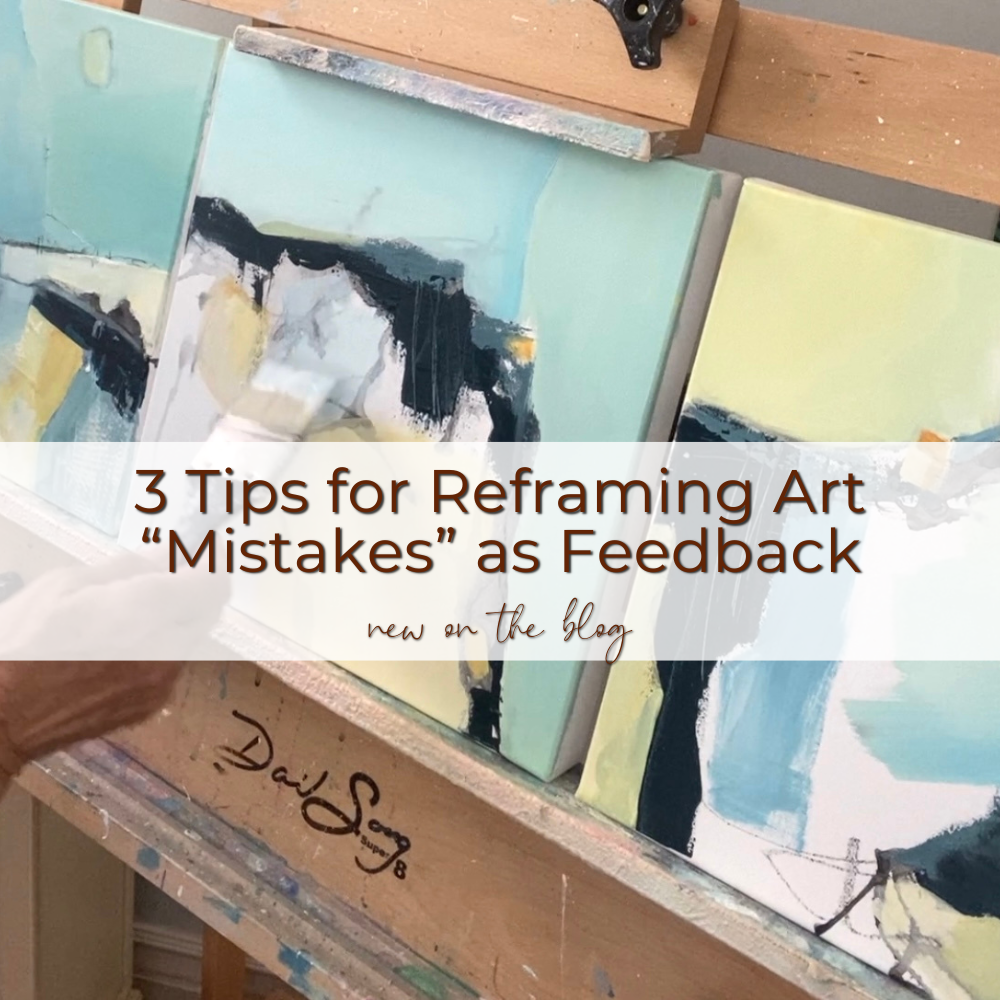
“Perfectionism is not the same thing as striving to be your best. Perfectionism is the belief that if we live perfect, look perfect, and act perfect, we can minimize or avoid the pain of blame, judgement, and shame. It’s a shield. It’s a twenty-ton shield that we lug around thinking it will protect us when, in fact, it’s the thing that’s really preventing us from flight.”―Brené Brown
How do YOU define a mistake, and why does that word have a negative connotation?
I believe in the power and beauty of mistakes. I believe that failures are feedback. I believe in the positivity of errors. I want you to as well, both as an artist and in your daily life!
Feedback Helps Us Learn and Grow
Learning is nothing more than a series of decisions and actions that provide you with feedback. Infants take a few shaky steps and fall down a hundred times when learning to walk. When learning to ride a bike, children tumble over before finding their balance. Students misspell words and mix up letters before piecing together the alphabet and learning to read.
Getting these things “wrong” early on in life rarely causes distress, discouragement, or anger. These “mistakes” are shaken off as the infant tries again, getting closer to walking with each attempt; as the kid gets back on the bike without the training wheels; till the students finally are able to get through an entire book. The “errors” are learned from and aren’t dwelled upon!
Our Damaging Fear of Mistakes
At some point, whether from fear of what others are thinking, from societally or personally imposed pressure to meet arbitrary benchmarks, or from plain insecurity, so many of us find ourselves fearful of failure and dwelling on our mistakes. We’ve stopped looking at “mistakes” and “failure” as feedback and a learning experience.
Lessons and opportunities to grow are true gifts! Any time you attempt something that doesn’t go the way you wanted it to, you are provided with the chance to learn. This is not a bad thing, it is beautiful!
The following are three tips that I find helpful for embracing mistakes and reframing them:
Tip 1: See Mistakes as Art Opportunities
As an artist, I value these opportunities for many reasons. First and foremost, the only true mistake you can make on a work of art is quitting. Innumerable paintings were caused by “mistakes?”
Julia Margaret Cameron, a famous Victorian-Era photographer, developed her signature “style” accidentally. Her hallmark of fame was her out-of-focus photographs and smeared images! So many other artists develop their taste and style after things went off-course and off-plan.
Lean into these “imperfections;” see the beauty in the stray brushstroke, the color that turned out differently than you’d hoped, or the splattered paint!
Tip 2: There are No True Mistakes in Art
The sooner you embrace this, the more you’ll see your practice flourish! Letting go of the pressure to be “perfect” and avoid “failure” makes painting more joyful, fun, and inspiring. Don’t be afraid of things turning out differently than you’d intended!
Tip 3: Embrace and Learn from the Things You’ve Tried and Don’t Like
If you aren’t happy with the way a painting turned out, identify the things you’d like to work on. Learn from this feedback. Do you need to work on your values? Great! Now you know! Do you want to work on your brushstrokes? The painting you’re unhappy with is a benchmark for you, and now you know which direction to go!
Each “mistake” and “failure” is an opportunity to check in, learn, and grow.
I sincerely hope you’ll work on letting go of perfectionism and start believing in the power and beauty of making “mistakes.” I’ve found mistakes to be powerful learning opportunities in [my art practice].
Tell me: What mistakes have turned out to be art opportunities for you? How do you handle unintended results in your art process? I’d love to hear from you in the comments.



:strip_icc()/BHG_PTSN19720-33d9cd22f6ab49e6a21982e451321898.jpg)

More Stories
The Ultimate Suit Lining Style Refresh
Review of Jackson’s Curated Sets: Moku Hanga Printmaking
Gurney Journey: Midwinter Greetings